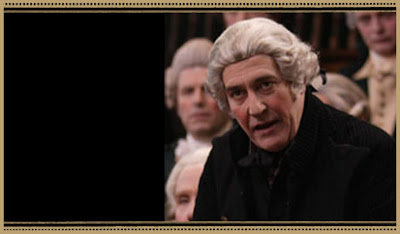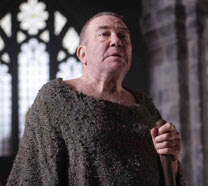 Actually, I’m not talking about the mistake of taking on a career tightening Prinny’s corset, though I think this poor fellow deserves combat pay for his efforts.
Actually, I’m not talking about the mistake of taking on a career tightening Prinny’s corset, though I think this poor fellow deserves combat pay for his efforts.
I’m talking about the more egregious mistakes regarding servants I’ve seen once in a while in Regency-set romances.
This past weekend I listened to a children’s song by Tom Chapin in which a royal footman sang in an imitation Cockney accent. But what I can deal with in a children’s song I find harder to take in a historical romance. I have read stories in which a butler or valet spoke Cockney and I have to admit that grates. It’s as if the author felt it was necessary to clarify the differences in social status.
 Yet some authors make the opposite error. In one book I read a scene where the hero, on returning home, warmly and publicly greets a man on the stairs using his first name. For a moment I thought there was a brother or good friend the author hadn’t mentioned before. It turned out to be the butler. It didn’t ruin the book for me but it did confuse me for a scene.
Yet some authors make the opposite error. In one book I read a scene where the hero, on returning home, warmly and publicly greets a man on the stairs using his first name. For a moment I thought there was a brother or good friend the author hadn’t mentioned before. It turned out to be the butler. It didn’t ruin the book for me but it did confuse me for a scene.
Yet I think this is something that is easily researched or even just absorbed through enough reading in the period. It’s not hard to learn the names and roles of various servants. Maybe the relationship between them and their masters is a bit more of a subtle thing. The way I understand it, servants often took their tone from the households they served. In a respectable household, the servants who dealt most closely with the family members (and as you can see some of them had to deal quite closely!) and also those who dealt with guests were expected to be respectable and well-spoken themselves. Of course, in a more ramshackle household the servants could run amok, too. It’s all part of the characterization.
Georgette Heyer wrote some of the strongest servant characters in her novels, like the domineering old Nurse in VENETIA, or Keighley, the groom in SYLVESTER. I don’t think I’ve read a romance in which a servant had a romantic role but I’ve read a few in which the heroes or heroines pretended to be a servant. Probably my favorite of those is Loretta Chase’s THE SANDALWOOD PRINCESS.
So what are some of your favorite servant (or pretending to be) characters? Do you like it when an author plays with class differences in a romance? Are there errors in depiction of servants that grate on you?
Elena
www.elenagreene.com





















